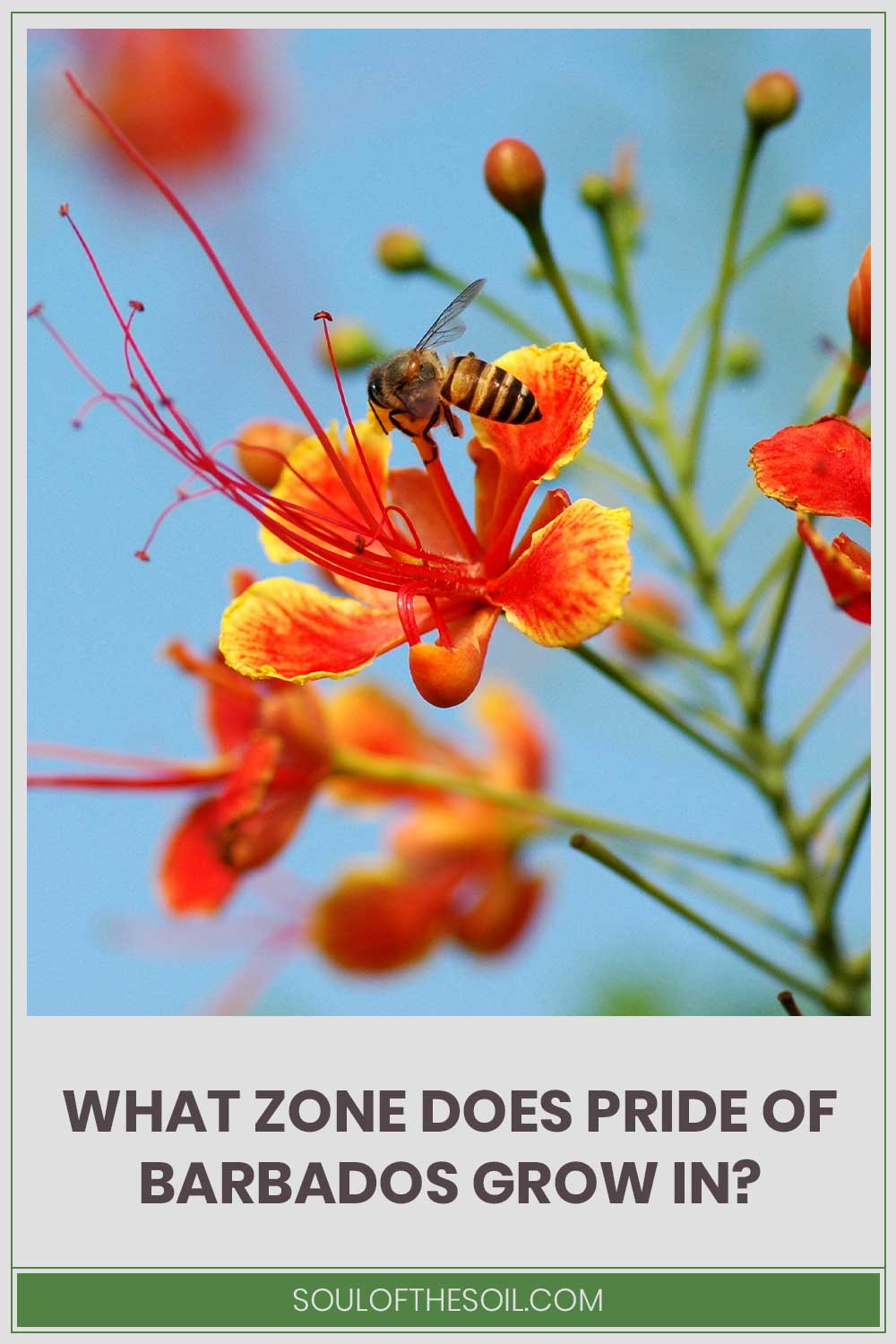What Zone Does Pride Of Barbados Grow In?
We may earn commissions for purchases made through links on our site. Learn more on our about us page.
The Caesalpinia pulcherrima, sometimes known as the “pride of Barbados,” is a type of pea. Barbados Flower Fence, Peacock Flower, Mexican Bird of Paradise, Dwarf Flamboyan, Caesalpinia, and Dwarf Poinciana are just a few of the many names it goes by.
Place it in the brightest, sunniest part of your garden to get the most out of this plant’s heat and sun tolerance. In zones 10 and 11, it can be grown as a big shrub.
In zone 9, it can be grown as a die-back perennial; and in zone 8B, it can be grown as a die-back shrub in the warmest sheltered areas.
When grown in zones 8B-9, when winter temperatures can drop below freezing, the plant’s stems should be protected with a layer of loose, airy mulch.

Is it Tropical?
Yes. Every house ought to have at least one “pride of Barbados,” as it is known, because it is one of the most beautiful tropical plants for the garden.
In addition, this tree is symbolic of Barbados’s national identity, as the island nation is known for its natural beauty and location in the Lesser Antilles.
What if You Plant it in the Wrong Zone?
The best zones for the Pride of Barbados are 8-11, but the lower the zone, the less bloom you will get from the plant. Although tropical, this plant has been known to survive low temperatures. However, the plant won’t grow as beautifully.
How to Make Ideal Conditions for it?
The Pride of Barbados flower is a bright, eye-catching crimson with yellow or orange variegation. Planting it correctly is the first step in taking care of it properly.
Soil
Pride of Barbados plants can flourish in less-than-ideal conditions, such as poor drainage or low levels of organic matter. pH levels in soil can be acidic, neutral, or alkaline. However, adequate drainage is crucial. Water must be allowed to swiftly escape the root zone.
These plants can be grown in either soil or peat-based potting mixes as long as they have quick drainage ingredients like sand, perlite, and vermiculite. In this case, a container with a 16-inch-wide mouth and 16-inch-deep walls that also has drain holes is ideal.
Sun
Six to eight hours of daily sunlight is ideal for Pride of Barbados plants. They can survive with only two hours of sun every day but thrive and produce more flowers when given longer hours of sunlight.
In the same way that plants cultivated in the ground require a certain amount of sunlight, so do plants grown in containers. So when bringing a containerized plant inside for the winter, make sure to put it in a spot where it can get bright, indirect light.
Water
For the first year or so after planting, Pride of Barbados plants require deep watering once or twice each week.
Once the plants are well-established, they may survive with little to no more water, but they will grow and bloom more profusely if given some during periods of drought.
If you water your plant deeply, its roots will grow deeper into the earth and become more drought-resistant.
Can it Survive Frost?
Pride of Barbados has persisted despite temperatures as low as 18 degrees Fahrenheit. This plant is grown annually in colder climates. Even if frost is not present, temperatures in the 40s can cause Pride of Barbados to lose its leaves.
Is it a Resilient Plant?
Indeed, the Pride of Barbados appears to be able to flourish or at least make it through even the most trying circumstances. It is possible for it to recover even after suffering damage from a frost when the temperatures are lower.
Final Thoughts on What Zone Does Pride Of Barbados Grow In
The Pride of Barbados is a tropical plant that is typically recommended to be planted in zones 8-11. However, even in lower zones and lower temperatures, it has been known to “die” after a frost and bounce back in late spring.
This is what makes it a resilient plant. Although the ideal warmth and sunlight are six to eight hours, it can survive with as little as two hours of sunlight a day.



Leave a Reply
You must be logged in to post a comment.